
Barnstaple is a town in North Devon, England. It was a river port at the lowest crossing point of the River Taw, flowing into the Bristol Channel. The town centre still preserves a medieval character. From the 14th century, it was licensed to export wool. Great wealth ensued. Later the town imported Irish wool, but its harbour silted up and it developed other industries such as shipbuilding, foundries and sawmills. Its Victorian market survives, with a high glass and timber roof on iron columns. The Parish of Barnstaple had a population of 24,033 at the 2011 census. The population of the built-up area was 32,411 in 2018. The Barnstaple town area, with nearby settlements such as Bishop's Tawton, Fremington and Landkey, has a population of 46,619 (2020).

North Devon is a local government district in Devon, England. North Devon Council is based in Barnstaple. Other towns and villages in the North Devon District include Braunton, Fremington, Ilfracombe, Instow, South Molton, Lynton and Lynmouth. The district was formed on 1 April 1974 as a merger of the Barnstaple municipal borough, the Ilfracombe and Lynton urban districts, and the Barnstaple and South Molton rural districts.

Braunton is an English village, civil parish, ecclesiastical parish and former manor in Devon. The village is situated 5 miles (8 km) west of Barnstaple. While not the largest village in England, it is amongst the most populous in Devon with a population at the 2011 census of 7,353 people. There are two electoral wards. Their joint population at the above census was 8,218. Within the parish is the fertile, low-lying Braunton Great Field, which adjoins the undulating Braunton Burrows, the Core Area in North Devon Biosphere Reserve, the largest psammosere in England. It confronts the Atlantic Ocean at the west of the parish at the large beach of Saunton Sands, one of the South West's international-standard surfing beaches.
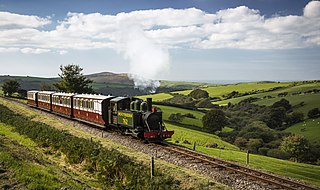
The Lynton & Barnstaple Railway (L&B) opened as an independent railway in May 1898. It was a single track, 1 ft 11 1⁄2 in narrow gauge railway and was slightly over 19 miles (31 km) long running through the rugged and picturesque area bordering Exmoor in North Devon, England. Although opened after the 1896 Light Railways Act came into force, it was authorised and constructed prior to that act. Therefore, as with all other railways, it was authorised under its own Act of Parliament and built to higher standards than similar railways of the time. In the United Kingdom it was notable as being the only narrow gauge line required to use main-line standard signalling. For a short period the line earned a modest return for shareholders, but for most of its life the L&B made a loss. In 1923 the L&B was taken over by the Southern Railway, and eventually closed in September 1935.

The Tarka Trail is a series of footpaths and cyclepaths around north Devon, England that follow the route taken by the fictional Tarka the Otter in the book of that name. It covers a total of 180 miles (290 km) in a figure-of-eight route, centred on Barnstaple.
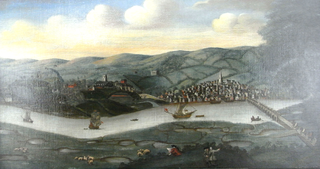
The ancient and historic village of Pilton is today a suburb within the town of Barnstaple, one of the oldest boroughs in England. It is located about quarter of a mile north of the town centre in the English county of Devon, in the district of North Devon. In 2009, the Pilton (Barnstaple) ward had a population of 4,239 living in some 1,959 dwellings. It has its own infants and junior school, houses one of Barnstaple's larger secondary schools, and one of Barnstaple's SEN specialist schools. North Devon Hospital is also within West Pilton parish. It has a Church Hall, two public houses, two hotels, and residential homes. It has residential estates of both private and public housing including flats. It also has a historic Church that dates back to at least the 11th Century.

Barnstaple Town railway station was an intermediate station on the L&SWR line to Ilfracombe, England.
Pilton Yard, in Barnstaple was, between 1898 and 1935, the main depot and operating centre of the Lynton and Barnstaple Railway ('L&B'), a narrow gauge line that ran through Exmoor from Barnstaple to Lynton and Lynmouth in north Devon, England. Pilton station was served by regular passenger services advertised between 1898 and 1904 after which only goods facilities were provided. Passengers were catered for at the nearby LSWR station, Barnstaple Town, which provided connections with trains on the standard gauge branch line to Ilfracombe. The L&B's main offices were also based at Pilton, in a building formerly belonging to the Tannery which had earlier occupied the site, and which took over the site after the railway closed.
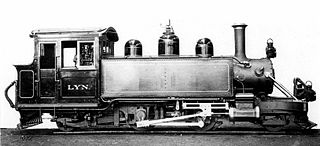
Lyn was a 2-4-2 tank steam locomotive built by the Baldwin Locomotive Works in 1898 for the Lynton and Barnstaple Railway. Between July 1897 and January 1898, employees of many British engineering companies were striking in an attempt to win the right to an eight-hour working day, leaving locomotive builders with large backlogs of unfulfilled orders. Thus, the Lynton and Barnstaple instead consulted the US based Baldwin to produce the engine they needed. After construction in Philadelphia, the loco was disassembled, shipped to Barnstaple, and reassembled by L&B staff in their Pilton workshops.
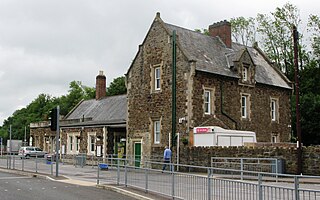
Barnstaple railway station is the northern terminus of the Tarka Line and serves the town of Barnstaple, Devon. It is 211 miles 25 chains (340.1 km) down-line from London Waterloo via Exeter St Davids. It is managed by Great Western Railway, which also operates the train service.
The Chumhill railway accident occurred 26 February 1913 in England, killing two. The Lynton & Barnstaple Railway maintained an exemplary safety record throughout its short existence, from 1898 to 1935, and no passengers or members of the public were ever killed or injured.

Knowle is a village near Braunton located on the A361 road between Ilfracombe and Barnstaple in North Devon, England. It is in the civil parish of Braunton. Knowle is situated near to the Iron Age fortification of Knowle Hill Castle.

Mullacott is a small settlement on the A361 road between Ilfracombe and Barnstaple, in Devon, England. It is referred to as 'Mullacott Cross' and forms the crossroads between routes toward Woolacombe, Ilfracombe, Lynton and Braunton. There is an industrial estate, restaurant and horse riding stables.

The Ilfracombe branch of the London & South Western Railway (LSWR), ran between Barnstaple and Ilfracombe in North Devon. The branch opened as a single-track line in 1874, but was sufficiently popular that it needed to be upgraded to double-track in 1889.

Lyd is a steam locomotive built by the Ffestiniog Railway in their Boston Lodge shops over a period of 15 years.

Benjamin Incledon (1730–1796) of Pilton House, Pilton, near Barnstaple in North Devon, was an English antiquarian and genealogist. He served as Recorder of Barnstaple (1758–1796).

Pilton House in the parish of Pilton, near Barnstaple, North Devon, Ex31, is an historic grade II listed Georgian mansion house built in 1746 by Robert Incledon (1676-1758), twice Mayor of Barnstaple, who was from nearby Braunton. It is situated almost in the centre of the ancient town of Pilton, but had formerly extensive grounds covering at least 20 acres, which extended down "Pilton Lawn", now built over, to the River Yeo. It later served as the residence for various Members of Parliament for Barnstaple, for which it was well suited being only a 10-minute walk from the centre of that town, yet in a secluded situation with extensive grounds, and sufficiently large and grand for entertaining borough officials and electors.
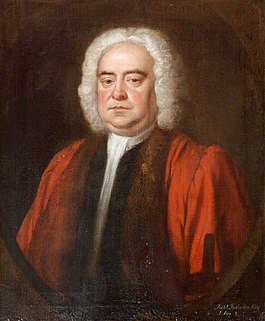
Robert Incledon (1676–1758) of Pilton House, Pilton, near Barnstaple in North Devon, was a lawyer of New Inn, London, a Clerk of the Peace for Devon, Deputy Recorder of Barnstaple and was twice Mayor of Barnstaple, in 1712 and 1721. In 1713 as mayor he supervised the building of the Mercantile Exchange on Barnstaple Quay, as recorded on the building by a contemporary brass plaque and sculpture of his armorials. He built Pilton House in 1746.

Sir Nicholas II Hooper (1654-1731) of Fullabrook, Braunton and Raleigh, Pilton in Devon, was a lawyer who served as Tory Member of Parliament for Barnstaple 1695-1715.
















